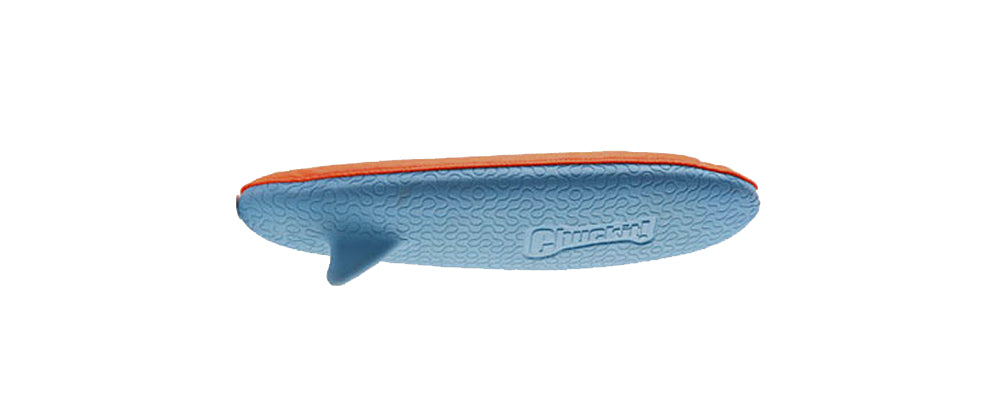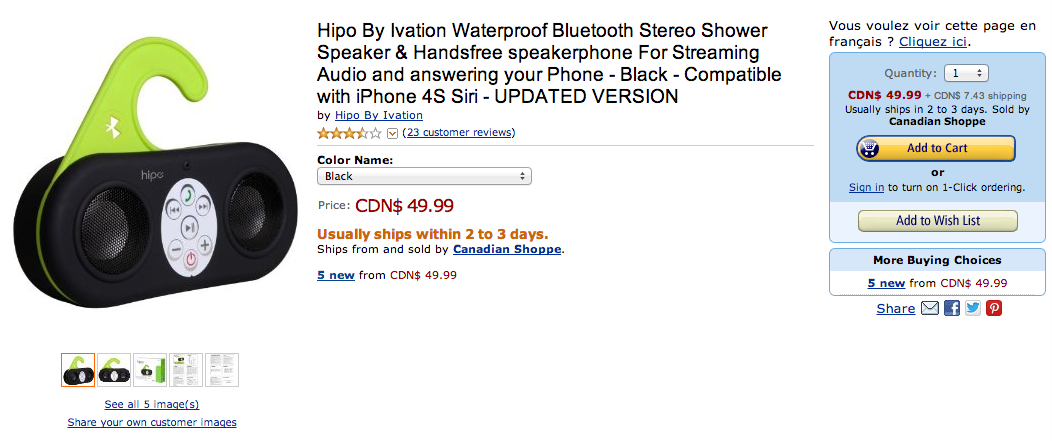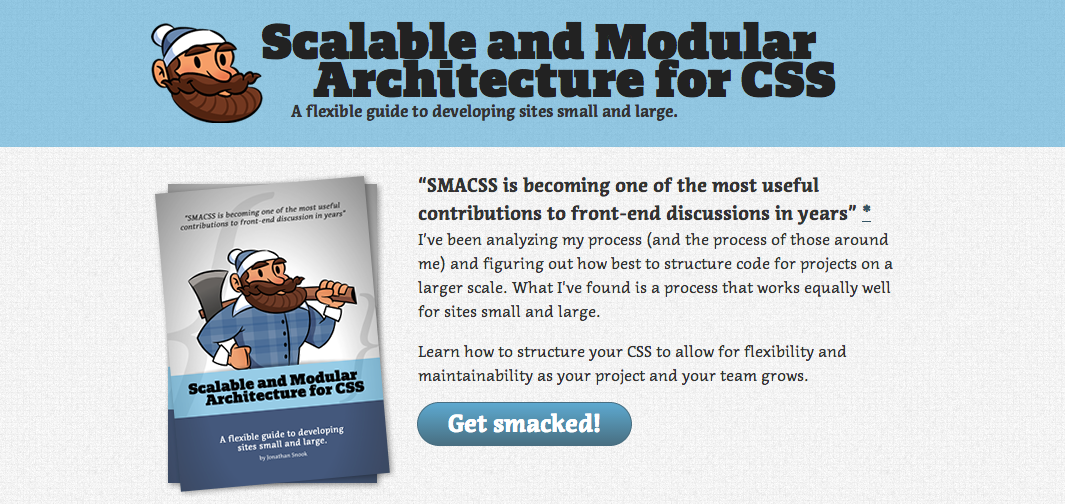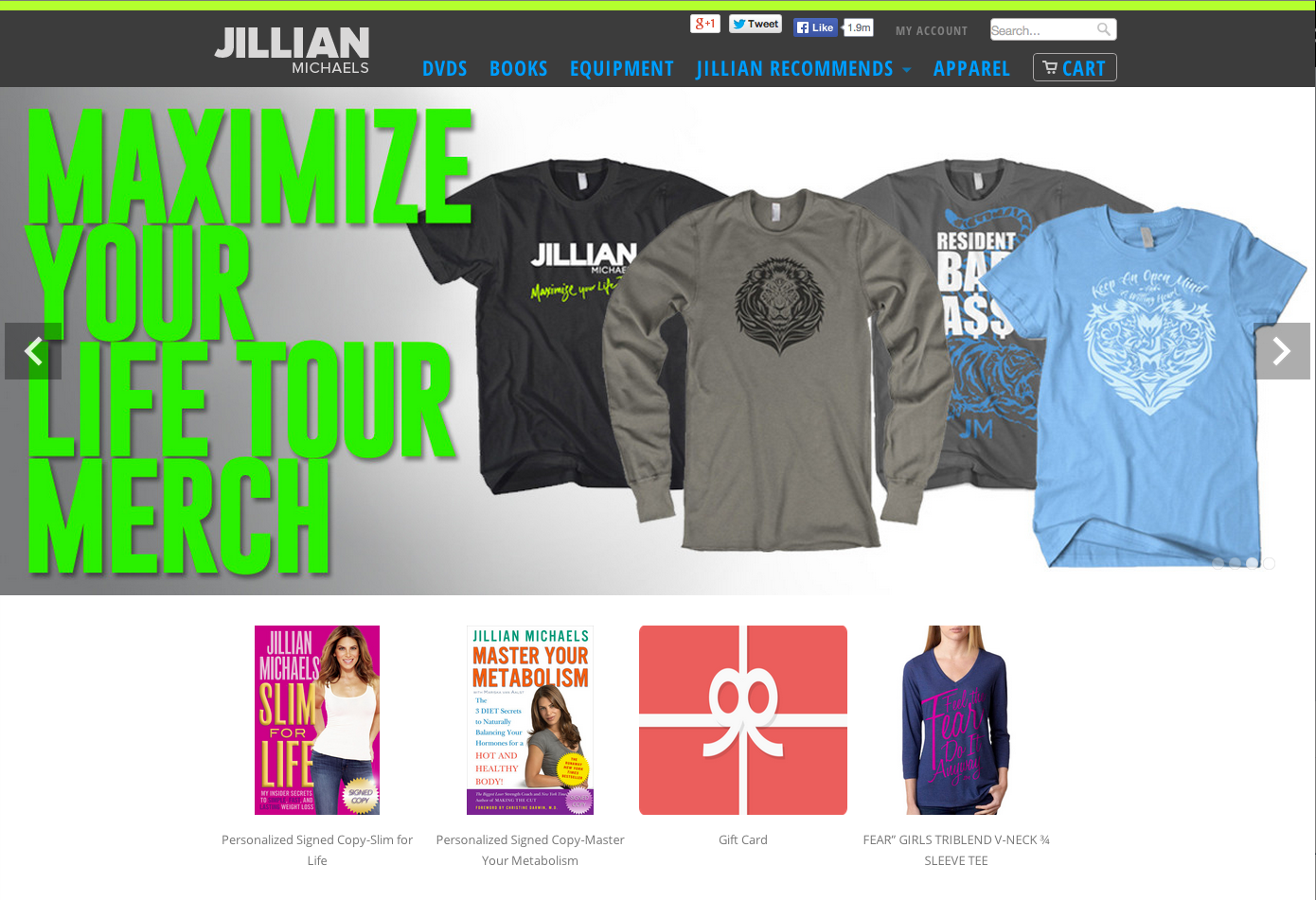by Shopify Writer: Richard Lazazzera
11 minute read
For new entrepreneurs, deciding to start an online business is exciting but it’s also new terrain that can be intimidating and difficult to navigate. One of the biggest challenges aspiring ecommerce entrepreneurs face is figuring out what to sell online - whether it’s a single product or multiple products that occupy a niche in a market.
Coming up with product ideas can be tough and it often feels like everything has already been done. Not to mention there's a lot of competition online these days. Consumers are just a click away from online giants like Amazon, Walmart, Zappos and Best Buy, who also happen to be extremely difficult to outrank in the search engines.
But, there are still golden opportunities out there and new, successful products are being launched all the time.
So, how can you get in on the action? We’ve put together a list of eight strategies and opportunities that you can use to help you start generating product ideas.
The Oberlo app makes it easy to seamlessly import and dropship thousands of
products directly from AliExpress.
This strategy is particularly useful if you plan to dropship products, as margins on drop shipped goods are thin making it difficult to use paid advertising channels effectively.
Example: When Andrew Youderian first got into ecommerce, his goal was to build a business that would generate income and provide him with flexibility. Because of this, the viability of the business was more important to him than being passionate about the product he sold. Because of this he took a technical approach in picking a niche that he felt had the highest chances of success, basing his niche selection on careful keyword research. Andrew Youderian found an opportunity to rank for keywords in the fishing equipment industry as well as CB Radios.

In the image above, you can see that Andrew has been able to rank in the 3rd position on Google for “Vehicle CB Radios”.
Examples: dbrand produces precision cut skins for smartphones, laptops and game consoles. In a little over a year they have been able to build their brand to 64,000 Facebook fans with their unique culture and communication with customers. Tapping into the meme culture, reddit and adding a unique sense of humour has catapulted dbrand to the top of the industry.
For example, take a look at this interaction with one of their customers:
A big part of building a successful brand is choosing a product or business that you can position in a new or unique way. An example of a retailer who has done this well is DODOcase, an iPad case manufacturer. They operate in an extremely crowded and competitive space however their cases are handcrafted using traditional artisan bookbinding techniques in the city of San Francisco. And if that’s something you want, you can only buy from them.
Example: Jing understood the pain people get from grinding their teeth. Not only physical, but in time constant grinding can lead to expensive dental bills. Knowing this was a pain point that many people would seek out a solution for and happily pay money to solve, he created Pro Teeth Guard. Pro Teeth Guard makes custom moulded teeth guard to prevent you from grinding your teeth while sleeping.

Active Hound is another great example of a brand that solved a pain point in the market. After talking to other dog owners at their local park they found that a major gripe among pet owners is that dog toys are expensive and they don’t last. Understanding this inspired them to create a line of ultra durable dog toys that can take some serious chewing and rough play. Taking a minute to think about pain points and little annoyances in your own everyday life could be just what you need to come up with the next great product idea.

Example: Black Milk Clothing was started In 2009 after the community of the founders blog,
‘TooManyTights’ exploded. Noticing the passion and opportunity around women's tights he created Black Milk Clothing. Today Black Milk is a multi-million dollar company that’s grown to over 150 employees and distributes its products globally. They do a great job of piggybacking on pop culture with their designs which allows them to tap into passionate audiences and customers from a range of different areas.

Example: Eric Bandholz began BeardBrand as a blog discussing business and sales strategy. Slowly, his passion for beards crept into the blog and in time he turned his passion for the bearded lifestyle into a separate and successful ecommerce business selling beard grooming related products.
Moorea Seal is another example of someone that turned their passion into a successful online business. In 2010 Moorea, a full-time artist living in Seattle, became self-employed via her various creative pursuits: blogging, running her own jewelry business, freelance illustration, and graphic design. In late 2012, she took an early retirement from design to spend more time on her passions and narrow her focus. In 2013, Moorea opened a store on Shopify. The Moorea Seal shop is a curated selection of beautiful accessories and objects, highlighting handmade from artists in the United States. Each of the designers have been hand picked by Moorea herself with intention, and 7% of all proceeds from the store benefit non-profits that are close to her heart. The Moorea Seal Store has achieved massive success in less than a year, and has been featured in several blogs and publications including The Huffington Post, Design Sponge, and Babble.
Example: Chaim Pikarski is a perfect example of someone that seeks out and capitalizes on opportunity gaps. Chaim started out by scouring Amazon ads and thoroughly reading the comments section looking for deficiencies and feature gaps buyers posted. Using this information he sourced a manufacturer in China and made the product better. He has repeated the process thousands of times over.
Hipo shower radio is one such product Chaim has manufactured:

Example: Jonathan Snook is an expert in web design and development. He used his years of experience and knowledge to write a self published book on web development and CSS called SMACSS, Scalable and Modular Architecture for CSS.

Jillian Michael from The Biggest Loser took the same approach and used her expertise in fitness and weight loss to develop and sell a line of products, including DVD’s, books and fitness equipment.

Example: Flockstocks noticed the trend for feather hair extensions very early on. Before spending any money or buying inventory, founder Sophie Kovic tested the market by quickly mocking up a test website. The results? 11 sales in 4 hours. Knowing there was a huge opportunity she built out her site, ordered inventory and even ended up winning the 2012 Shopify Build A Business competition in the Apparel & Jewelry category.

The niche and products you choose will shape your entire business, the activities you do, and the difficulty you’ll face. Selling food related products is very different from selling products like smartphone cases and there will be unique challenges involved in each.
Understanding each of the eight opportunities above should get the gears turning and help you find the perfect first product or niche.
This is the first in a series of posts that will detail the process of getting started in ecommerce. In the coming weeks we will be posting further in-depth articles on other aspects of finding and evaluating products to sell online.
11 minute read
For new entrepreneurs, deciding to start an online business is exciting but it’s also new terrain that can be intimidating and difficult to navigate. One of the biggest challenges aspiring ecommerce entrepreneurs face is figuring out what to sell online - whether it’s a single product or multiple products that occupy a niche in a market.
Coming up with product ideas can be tough and it often feels like everything has already been done. Not to mention there's a lot of competition online these days. Consumers are just a click away from online giants like Amazon, Walmart, Zappos and Best Buy, who also happen to be extremely difficult to outrank in the search engines.
But, there are still golden opportunities out there and new, successful products are being launched all the time.
So, how can you get in on the action? We’ve put together a list of eight strategies and opportunities that you can use to help you start generating product ideas.
Product and Niche Opportunity Types
Below is our list of eight potential opportunities to help you find your own product or niche. Each involves a different mindset and approach.- Find Opportunities in Keywords
- Build an Interesting/Captivating Brand
- Identify a Customer Pain Point
- Identify Customer Passions
- Go With Your Passion
- Look for an Opportunity Gap
- Consider Your Experience
- Capitalize on Trends Early
Let’s take a look at each opportunity in more detail:
1. Find Opportunities in Keywords
It’s no secret that organic search traffic is a massive marketing channel. Looking for keyword opportunities involves strategically looking for a product or niche online based on the search queries people are using, volume and competition for those searches. This approach is fairly technical and involves a strong understanding of keyword research as well as SEO. Finding opportunities in keyword searches can be an effective strategy for capturing consistent organic traffic from Google.This strategy is particularly useful if you plan to dropship products, as margins on drop shipped goods are thin making it difficult to use paid advertising channels effectively.
Example: When Andrew Youderian first got into ecommerce, his goal was to build a business that would generate income and provide him with flexibility. Because of this, the viability of the business was more important to him than being passionate about the product he sold. Because of this he took a technical approach in picking a niche that he felt had the highest chances of success, basing his niche selection on careful keyword research. Andrew Youderian found an opportunity to rank for keywords in the fishing equipment industry as well as CB Radios.

In the image above, you can see that Andrew has been able to rank in the 3rd position on Google for “Vehicle CB Radios”.
2. Build an Interesting and Unique Brand
Taking a brand building opportunity approach is very different from an SEO approach. This involves developing a superior understanding of your customers, crafting a unique brand and carving out a unique place in your customer’s mind. A brand building approach can be particularly effective at setting you apart if margins are slim or competition is fierce.Examples: dbrand produces precision cut skins for smartphones, laptops and game consoles. In a little over a year they have been able to build their brand to 64,000 Facebook fans with their unique culture and communication with customers. Tapping into the meme culture, reddit and adding a unique sense of humour has catapulted dbrand to the top of the industry.
For example, take a look at this interaction with one of their customers:
A big part of building a successful brand is choosing a product or business that you can position in a new or unique way. An example of a retailer who has done this well is DODOcase, an iPad case manufacturer. They operate in an extremely crowded and competitive space however their cases are handcrafted using traditional artisan bookbinding techniques in the city of San Francisco. And if that’s something you want, you can only buy from them.
3. Identify a Customer Pain Point
Solving a customer pain point has always been a great way to get sales. Tylenol wouldn't be in business if a headache didn’t hurt. A customer pain doesn’t always have to be physical pain though, it also accounts for frustrating or poor experiences.Example: Jing understood the pain people get from grinding their teeth. Not only physical, but in time constant grinding can lead to expensive dental bills. Knowing this was a pain point that many people would seek out a solution for and happily pay money to solve, he created Pro Teeth Guard. Pro Teeth Guard makes custom moulded teeth guard to prevent you from grinding your teeth while sleeping.

Active Hound is another great example of a brand that solved a pain point in the market. After talking to other dog owners at their local park they found that a major gripe among pet owners is that dog toys are expensive and they don’t last. Understanding this inspired them to create a line of ultra durable dog toys that can take some serious chewing and rough play. Taking a minute to think about pain points and little annoyances in your own everyday life could be just what you need to come up with the next great product idea.

4. Identify Customer Passions
Almost as good, maybe even better than solving a customer pain point is catering to a customer passion. When consumers are passionate about something they will often spend more money. Golfers are notorious for spending thousands of dollars to lower their score by even one stroke. Additional benefits can include deeper interaction and loyalty with your brand as passionate consumers are generally more involved in the industry and the buying process.Example: Black Milk Clothing was started In 2009 after the community of the founders blog,
‘TooManyTights’ exploded. Noticing the passion and opportunity around women's tights he created Black Milk Clothing. Today Black Milk is a multi-million dollar company that’s grown to over 150 employees and distributes its products globally. They do a great job of piggybacking on pop culture with their designs which allows them to tap into passionate audiences and customers from a range of different areas.

5. Go With Your Passion
Some people consider choosing a niche based on your own personal passion to be a recipe for disaster but that’s not always the case, and can prove to be extremely profitable. Building an ecommerce business is a lot of hard work and you’ll likely hit some bumps in the road on your journey. Passion tends to be one thing that always helps to carry you through the hard times. For some people the passion of building a business alone can be enough to drive them but for others to succeed they need to be passionate about what they are selling and their industry. Staying motivated is key to building and carrying a business through the difficult periods. They say if you love what you do, you’ll never work another day in your life.Example: Eric Bandholz began BeardBrand as a blog discussing business and sales strategy. Slowly, his passion for beards crept into the blog and in time he turned his passion for the bearded lifestyle into a separate and successful ecommerce business selling beard grooming related products.
Moorea Seal is another example of someone that turned their passion into a successful online business. In 2010 Moorea, a full-time artist living in Seattle, became self-employed via her various creative pursuits: blogging, running her own jewelry business, freelance illustration, and graphic design. In late 2012, she took an early retirement from design to spend more time on her passions and narrow her focus. In 2013, Moorea opened a store on Shopify. The Moorea Seal shop is a curated selection of beautiful accessories and objects, highlighting handmade from artists in the United States. Each of the designers have been hand picked by Moorea herself with intention, and 7% of all proceeds from the store benefit non-profits that are close to her heart. The Moorea Seal Store has achieved massive success in less than a year, and has been featured in several blogs and publications including The Huffington Post, Design Sponge, and Babble.
6. Look For an Opportunity Gap
Finding an opportunity gap involves looking at a particular product, niche or industry and identifying a problem or deficiency that can be capitalized on. What can you do different or better from what everyone else is currently doing? An opportunity gap may exist in the form of an improved product feature, an unrealized market by your competitors, or even in your marketing capability.Example: Chaim Pikarski is a perfect example of someone that seeks out and capitalizes on opportunity gaps. Chaim started out by scouring Amazon ads and thoroughly reading the comments section looking for deficiencies and feature gaps buyers posted. Using this information he sourced a manufacturer in China and made the product better. He has repeated the process thousands of times over.
Hipo shower radio is one such product Chaim has manufactured:

7. Consider Your Experience
Have you worked in a particular industry and know the in’s and out’s? Maybe you have a skill or a particular set of experiences that makes you an expert on a particular topic. Turning your expertise into your own online business is a great way to enter the market with a leg up that may not be so easy for others to duplicate.Example: Jonathan Snook is an expert in web design and development. He used his years of experience and knowledge to write a self published book on web development and CSS called SMACSS, Scalable and Modular Architecture for CSS.

Jillian Michael from The Biggest Loser took the same approach and used her expertise in fitness and weight loss to develop and sell a line of products, including DVD’s, books and fitness equipment.

8. Capitalize on Trends Early
Capitalizing on a trend early enough can be massive for a new business. It allows you to carve out a place in consumers minds and establish yourself as a leader before others have a chance to. Jumping on a trend early can also have some big impact on your SEO and allow you to climb to the top of search rankings easier and quicker.Example: Flockstocks noticed the trend for feather hair extensions very early on. Before spending any money or buying inventory, founder Sophie Kovic tested the market by quickly mocking up a test website. The results? 11 sales in 4 hours. Knowing there was a huge opportunity she built out her site, ordered inventory and even ended up winning the 2012 Shopify Build A Business competition in the Apparel & Jewelry category.

Which Opportunity Do You See?
Keep in mind that because of heavy competition in the most common and popular product categories, choosing the right niche can be instrumental to your success. Don't be afraid to look at smaller product categories and niches. Even though a niche is a smaller subset of a larger category with less potential customers, it makes up for that by way of less competitors and a more targeted audience. Less competition makes it easier to get to the top of Google, and usually is more cost effective and efficient to advertise to your customers.The niche and products you choose will shape your entire business, the activities you do, and the difficulty you’ll face. Selling food related products is very different from selling products like smartphone cases and there will be unique challenges involved in each.
Understanding each of the eight opportunities above should get the gears turning and help you find the perfect first product or niche.
This is the first in a series of posts that will detail the process of getting started in ecommerce. In the coming weeks we will be posting further in-depth articles on other aspects of finding and evaluating products to sell online.
Ready to put what you've learned into action? Build your own online store with Shopify! Don't forget to check in with our 24-7 customer service always available to assist!
Are you already a high-volume, fast-growing merchant?
We have the experts to assist with online store and e-Commerce set-up, design, development, apps, marketing and photography.
Advance your business for a fraction of traditional Enterprise costs with Shopify-Plus.
Whether you sell
online, on social media, in store, internationally
or out of the trunk of your car,
Shopify has you covered.
or out of the trunk of your car,
Shopify has you covered.



Comments
Post a Comment